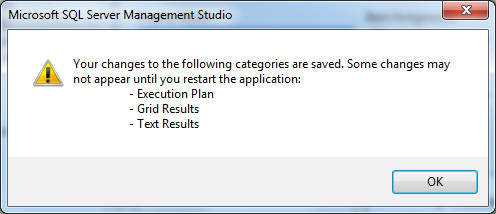Because it’s fresh in my mind, I’ll leave this here for candidates looking for software engineering roles. I typically interview for back-end C#/.Net/T-SQL developer roles, so what I have to say here is very much targeted to that. Anyway, in an interview, I generally ask two technical questions:
- What are the three methods for adding services in Dependency Injection?
- What’s the difference between a clustered and a non-clustered index?
The three methods are AddScoped(), AddSingleton(), and AddTransient(). They govern the scope/lifetime of resources created through DI. If you are capable of answering that, then it can easily lead to a discussion about their differences, when to use each, more general DI topics, etc.
The difference between the indexes is that the clustered index is the table (and so there can be only one). It’s how data in the table is organized in storage and in memory. Non-clustered indexes are additional indexes that are stored separately, but have in their leaf nodes the keys of the clustered index. And while there is a limit, the number of them for any given table is more of a design/performance choice. Here, the discussion can head toward B-tree logic, branch versus leaf nodes, key look-up performance, scans versus seeks, etc.
If you’re billed as a senior API developer on the Microsoft stack, then I expect you to know the former. If a senior database developer, then I expect you to know the latter. In my experience, very few candidates know both (and surprisingly few candidates know either). But what really irks me is when someone tries to bluff their way through one of these.
What I would much rather see is someone turn the question around. “Well, I know indexes obviously apply to tables and their use affects performance, but I don’t know the difference. Can you explain it to me?” Show me that you understand your limits and are willing to learn. Tell me what you do know, and let’s work from there. Let’s see how well you expand your knowledge on the fly, under a little pressure. Don’t try to BS me.
Whatever you know about these topics, I guarantee I can find some corner where I know more than you. It might take me a minute to get there, and it may be some esoteric quirk that will almost never come up in the real world, but I’ll get there. My goal is not to show I’m smarter than you (and, in fact, I’m genuinely hoping you’re smarter than me). My goal is to find your edge and pick away at it and see how you react.
Example: I had a candidate recently who was primarily a database developer. He had some .Net skills, but that part of his resume was marginal. But the recruiter brought him to me as a potentially very good candidate for the role because of his database experience. He really had that highlighted on his resume. It was clear that he thought of himself as a go-to for database development.
So I asked the index question. And he BS’d his way through an answer. And then didn’t follow up. Didn’t inquire about the accuracy of his answer. Didn’t probe at all. The interview carried on for a while after that, because I want to be sure of my assessment and not just make a snap judgment. But nothing afterward convinced me that this first impression was incorrect, so we were effectively done right there.
Lesson 1: If you think you’re an expert in an area, then you’d better know what you don’t know. If you don’t think the rabbit hole goes any deeper, then you’re not an expert. I’m very much aware of how little I know of SQL Server in general, and this is coming from someone who is regularly called “the database guy”.
Lesson 2: Failure to answer the question is not failure. Failure to follow up is. Show me that you’re willing and able to learn. Work the problem, right there in the interview. In tech, we will be faced with problems and won’t know the answers. We will be expected to figure them out. So show me that you can figure stuff out. This ends up being more true of junior candidates. They’re early enough in their careers that everything is a learning experience. But what I see is senior candidates with too much swagger, thinking they know all they need to know, and then spending the interview trying to convince me of the same. And those are exactly the kinds of candidates I will not hire.
Lesson 3: If you’re interviewing for a back-end C#/.Net/T-SQL role, go figure out the answers to those two questions. Not just what I wrote, but go for a real understanding of them. Get to the point at which you can answer “Why?” questions about them. If you go through enough interviews, I guarantee they will both come up at some point. I know I’m not the only interviewer who asks them. I stole the former from a colleague, and I know of several others who treat the latter as their go-to.
And good luck in your interviews!


